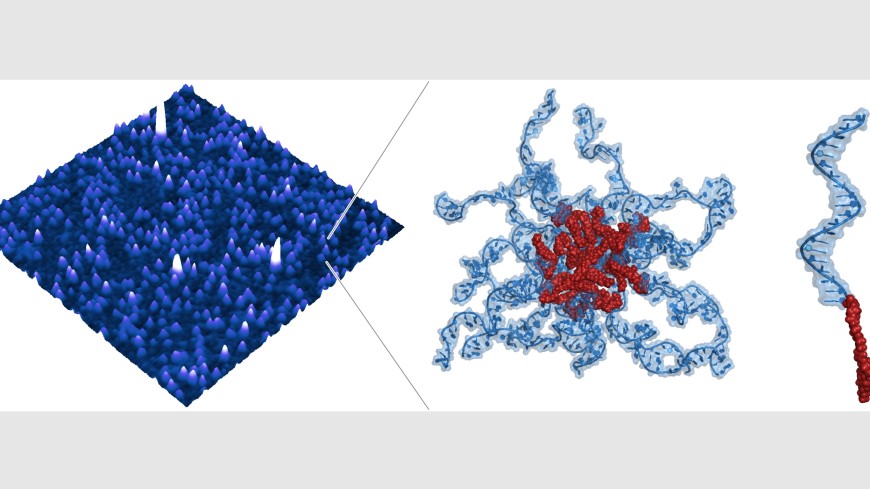Customising DNA nanoparticles to make drugs
Publication in ChemBioChem / researchers present fundamental new technology
2022/09/28
Customising DNA nanoparticles to make drugs: Researchers at TU Darmstadt have demonstrated how they have been able to design a new class of synthetic materials to target the vulnerabilities of a pathogen and effectively destroy it. They have now published the results of their research in the journal ChemBioChem.

For many years, scientists at the Department of Biology at the TU Darmstadt have been conducting research into new methods for the development of improved therapeutics to combat infectious diseases. The importance of this field of research has become abundantly clear during the SARS-CoV2 pandemic. The group of Professor H. Ulrich Göringer at the institute of Molecular Genetics has now published a new paper on the topic entitled: “Core-Shell DNA-Cholesterol Nanoparticles Exert Lysosomolytic Activity in African Trypanosomes”. The scientists report on a novel approach for the design of synthetic drugs that can be targeted toward multiple vulnerable points of a pathogen.
The compounds in question are nanoparticles, i.e., particles with a diameter of only a few nanometers, in which a core of membrane lipids is surrounded by a shell of DNA molecules. While the lipid molecules exert a general membrane-destroying effect on the pathogen, the DNA shell can be “programmed” to attack a second biochemical target. Against African sleeping sickness, an infectious disease in sub-Saharan Africa, the authors constructed a DNA lipid nanoparticle virtually on the drawing board. After synthesis, they demonstrated how the particle destroys the disease-causing parasite in a targeted manner over the course of only a few hours. The nanoparticles unleash their toxicity against the sleeping sickness pathogen in very small amounts, i.e., in a concentration range one order of magnitude below the effective concentration of already known therapeutics.
The particles synthesized by the research group consist of short DNA and cholesterol molecules – both, naturally occurring non-toxic compounds. The design of the DNA nanoparticles presented here can also be adapted to other infectious diseases and thus, the technology could become the basis for further applications in the pharmaceutical industry.
The research project applies all design principles of the field of Synthetic Biology and thus fits into the research focus of the Centre for Synthetic Biology at the TU Darmstadt. The paper by the first authors Dr. Robert Knieß and Dr. Matthias Leeder appeared in the journal ChemBioChem and includes results from two undergraduate students: Paul Reißig and Felix Geyer. The project was funded by the Dr. Illing Foundation for Macromolecular Chemistry.
Background
The field of Synthetic Biology represents the engineering discipline of the biosciences. The field combines knowledge from various disciplines, including systems biology, genetic engineering, information theory, and nanotechnology. It aims at the development of novel, non-biological compounds as well as new gene regulatory and metabolic circuits. This is achieved by applying engineering principles, such as the construction of prototypes by modular design, and the optimization and standardization of all steps and components involved in the process.
sip
